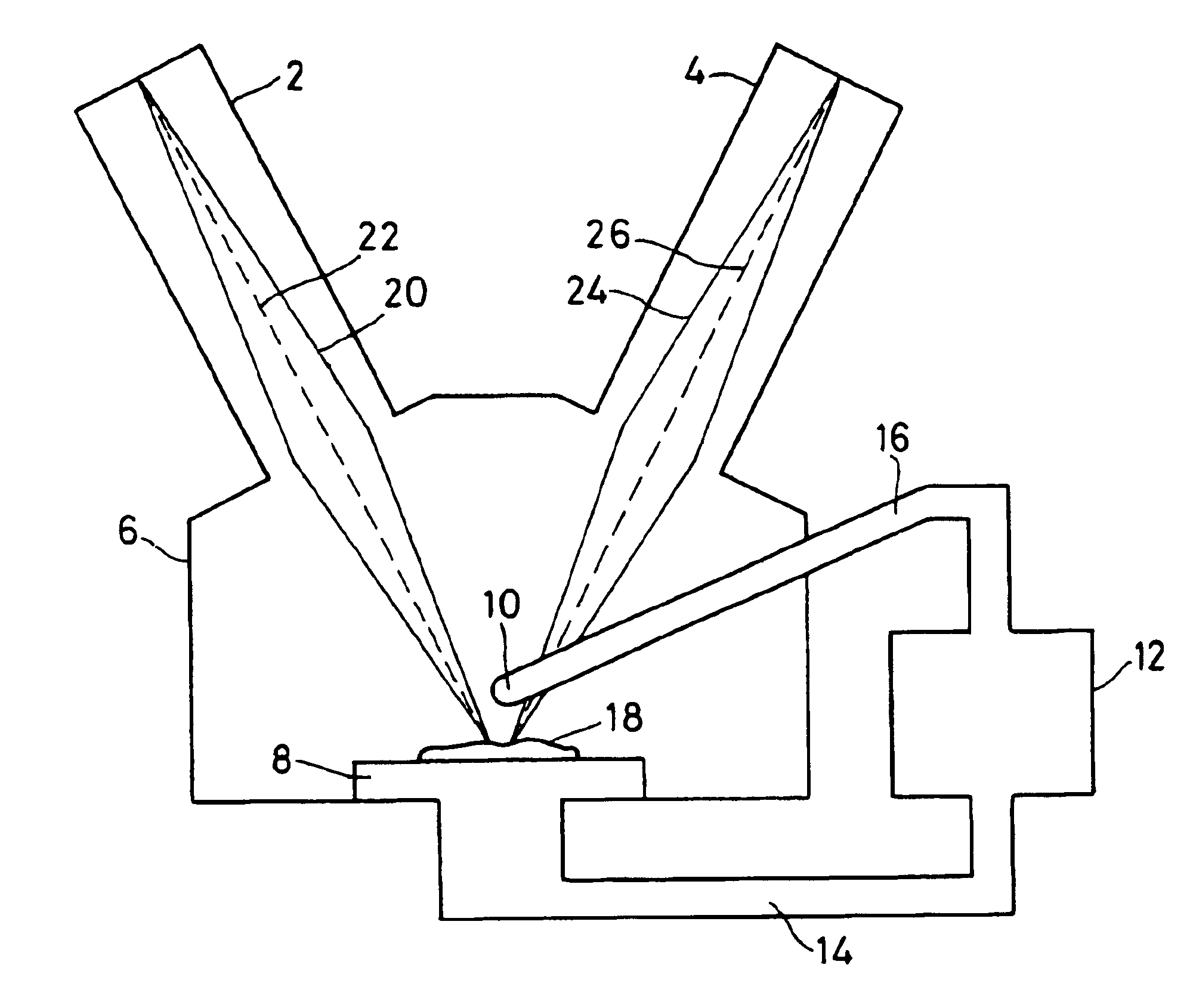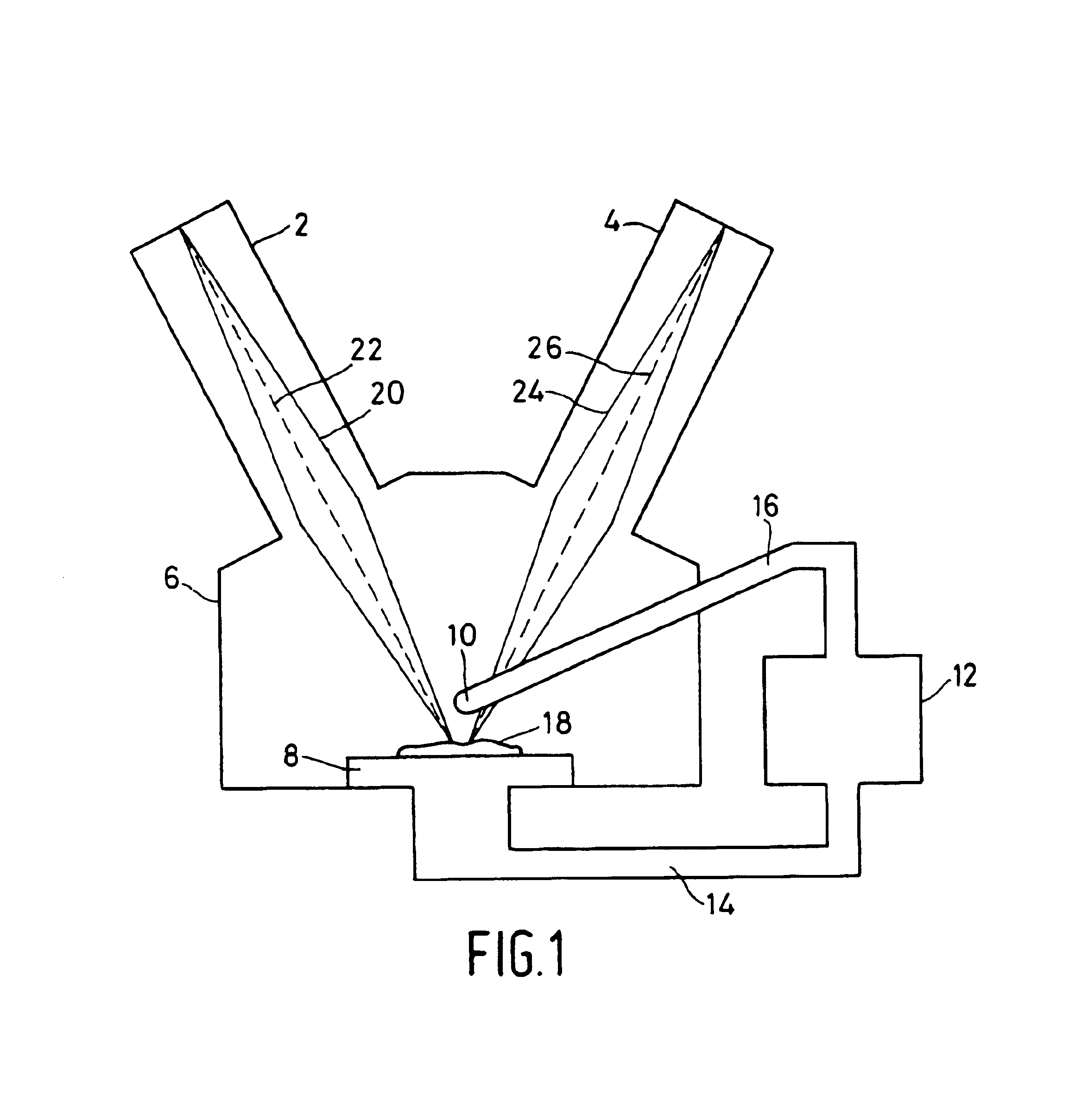Method of obtaining a particle-optical image of a sample in a particle-optical device
a particle-optical device and sample technology, applied in the direction of material analysis using wave/particle radiation, instruments, nuclear engineering, etc., can solve the problems of easy to miss electron-optical images, difficult, often impossible, to find the right location in which to make a cross-section, etc., to achieve accurate regulation, easy to knock out places, and easy to regulate
- Summary
- Abstract
- Description
- Claims
- Application Information
AI Technical Summary
Benefits of technology
Problems solved by technology
Method used
Image
Examples
Embodiment Construction
[0022]FIG. 1 schematically depicts a particle-optical device for performing the method according to the invention. The device is formed by a so-called Dual Beam system, in which two particle-optical columns 2 and 4 are present, whereby column 2 is an ion-optical column and column 4 is an electron-optical column. Both columns 2 and 4 are mounted to a sample space 6 that can be evacuated and in which a sample stage 8 is present. The sample space 6 is also provided with a cooled opposing surface in the form of a coo ling finger 10. The sample stage 8 and the cooling finger 10 can be adjusted to a desired low temperature by means of a schematically depicted cooling installation 12. The connection between the cooling installation 12 and the sample stage 8 is schematically depicted by cooling duct 14, and that between the cooling installation 12 and the cooling finger 10 by cooling duct 16. The sample 18 that is to be processed is located on the sample stage.
[0023]Column 2 produces an ion...
PUM
| Property | Measurement | Unit |
|---|---|---|
| thickness | aaaaa | aaaaa |
| pressure | aaaaa | aaaaa |
| temperature | aaaaa | aaaaa |
Abstract
Description
Claims
Application Information
 Login to View More
Login to View More - R&D
- Intellectual Property
- Life Sciences
- Materials
- Tech Scout
- Unparalleled Data Quality
- Higher Quality Content
- 60% Fewer Hallucinations
Browse by: Latest US Patents, China's latest patents, Technical Efficacy Thesaurus, Application Domain, Technology Topic, Popular Technical Reports.
© 2025 PatSnap. All rights reserved.Legal|Privacy policy|Modern Slavery Act Transparency Statement|Sitemap|About US| Contact US: help@patsnap.com



